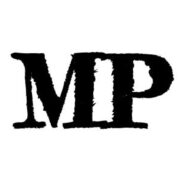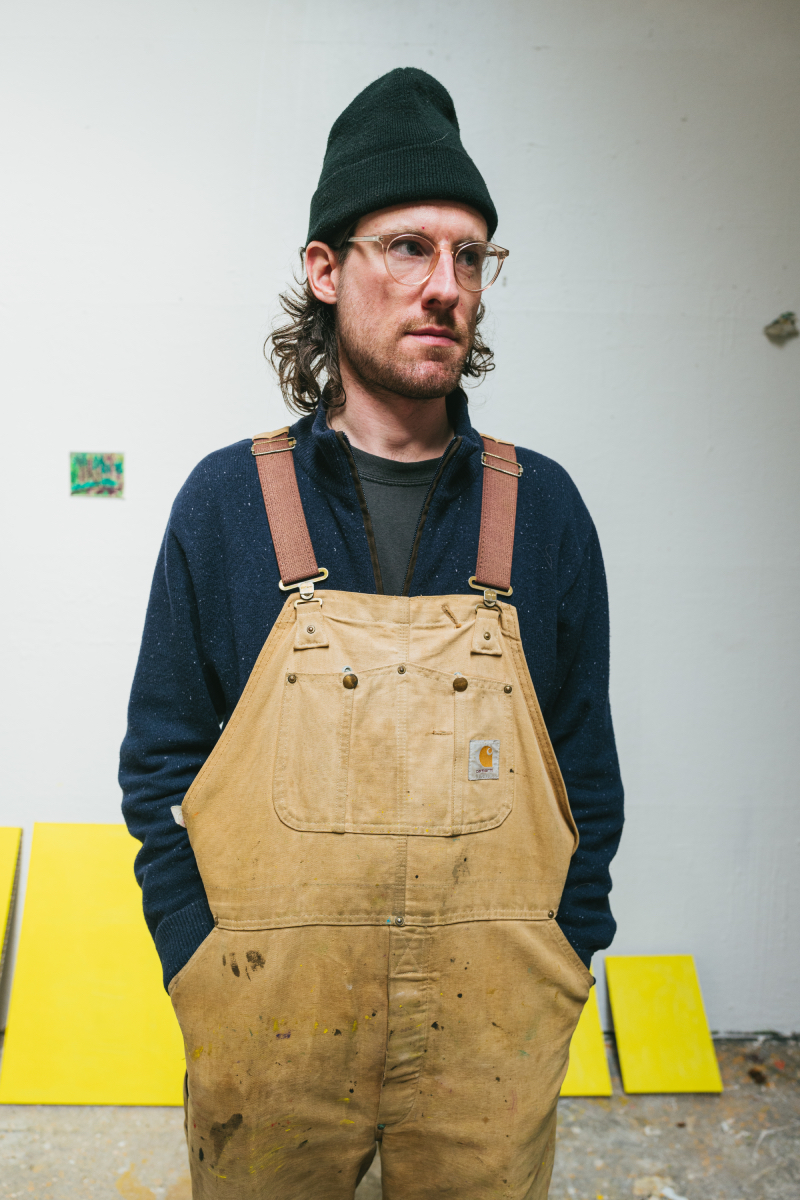
Image courtesy of the artist and Farmlands Residency
© Tom Jungbluth 2022
Fresh off his solo exhibition Still Alive, David Hanes sits down with Erik Sommer to talk about acceptance, repetition, the significance of being in-between, and the pleasure of mixing paint from scratch.
Art is my constant, and it remains my mode of engaging with a world I often misunderstand and feel disconnected from.
(ES) Describe your work for us.
(DH) Current words that come to mind for me are: connecting, enlivening, simultaneously slow & fast, present, curious, art historically aware, freeing, spiritual, mysterious, looking & listening, challenging, blocky, blotchy, brutal, playful, lyrical, methodical, withholding & revealing, being & becoming, alchemical, colorful, comforting, and sustaining.
Tell us about your backgroud. Where did you grow up?
I was born in 1987 in the city of Toronto, Canada, but my old man is from Chicago, so we often drove down to the states to visit family in the Midwest. There was this thing about being a person from both places. A contrast between urban city space and rural country space that has informed my experience. Family has also always been important to me. It was a grounding for me as we were often on the road. And my relationship with my brothers is especially important to me. I was in the middle of the three of us, so continuously feeling like there was something about being “in-between.” And, that “in-betweenness” has been a theme for me that I work with/against today in my work. In many ways that dual-mindedness has been a safety mechanism and has seen me through a great deal of hardships. Still, it somehow left a void within me that I eventually filled with drugs, alcohol, and partying for a couple of decades. So, addiction & recovery has been a part of my story too, and that, coupled with my conviction to follow my art, led me to live in Berlin. Now having 6 years clean is a great accomplishment for me. Today I want my art to represent where I am at in my spiritual story, as well as reflect that human story of a survivor — of a growing individual.
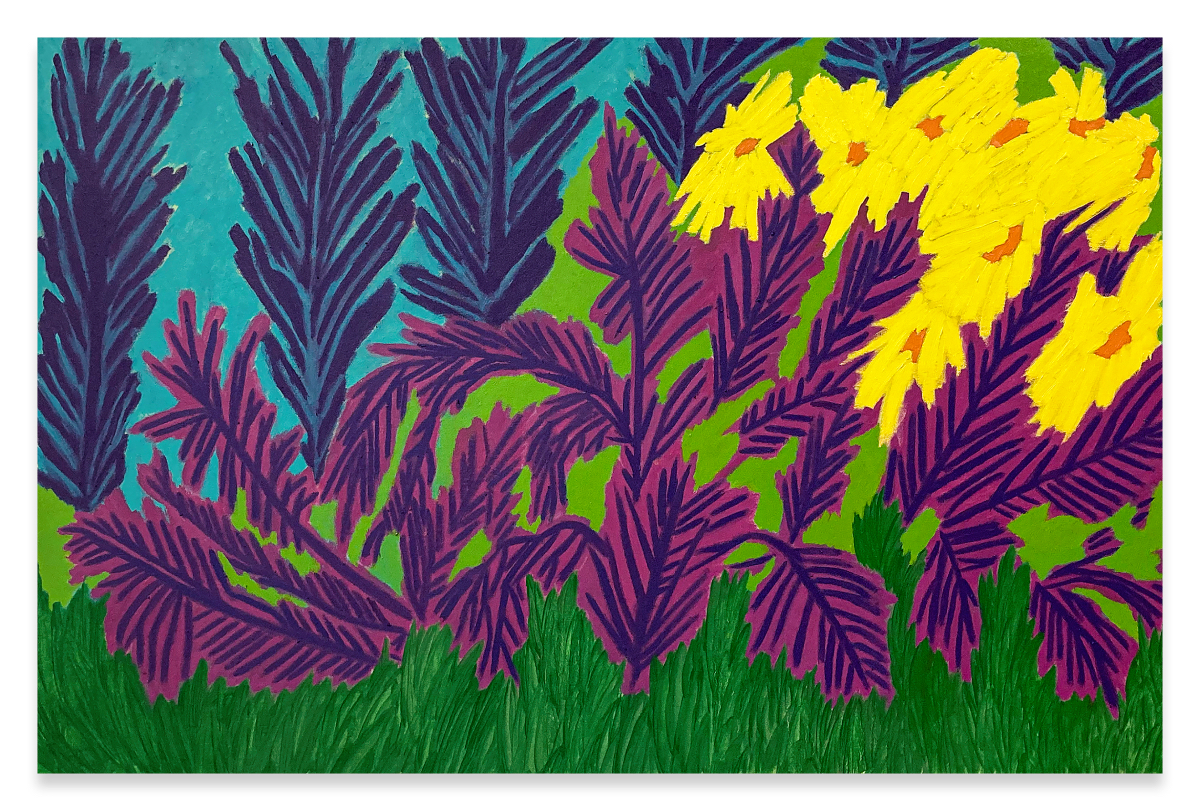
75.5 x 116 cm
oil on canvas
2022
Where do you live and work now?
I have been headquartered in Berlin, Germany, since 2014. But, in the last year, my “nomadicness” has returned. So I’ve often been finding myself in planes, trains, and automobiles, living out of a bag, doing my best to translate that ongoing “presentness” to the canvas. And at the moment, I am on an 18th-century farm in Luxembourg, completing a solo residency with Farmlands Residency, after which I return to Berlin to water the grass and reorient myself in my routine there.
How do you think this has influenced your work?
Just thinking on my relationship with Berlin, it has been a significantly transformative one for me. When I first came, my practice was primarily digital. I had a nomadic life then too, and the studio was my computer and phone. But after getting clean, getting a studio, grounding in space, exposing myself to lots of art while working at Sprüth Magers Gallery, and living in Berlin, it felt like change had to take place not only inside myself but also in my art. Art is my constant, and it remains my mode of engaging with a world I often misunderstand and feel disconnected from. Starting in late 2018, after my solo show with Open Forum, things began to really get loud in my head, demanding change, demanding creativity that I was essentially ignoring. I took on a painting mentor (Mark Emblem) and started to really think about Looking & Listening. Coupled with some intense shadow work and a physical & spiritual alchemical process, I eventually pursued a more “traditional” approach to art making. That now involves studying painting, working on technique, and forming a new creative methodology grounded in a return to the studio and a reimagining of traditional and observational practices. So, to sum it up, Berlin has been this safe space for me. A place to explore aspects of my character and psychology that I couldn’t do in another city for some reason. Berlin also has a lot of painting in it. I basically go to the Alte/Neue Nationalgalerie(s), the Gemäldegalerie, and the Museum Barberini every month or so to study, learn, meditate, absorb, and break down my presumptions about art—especially painting—in a contemporary context. I am also fortunate to have my studio close to the Templehofer Feld and Hasenheide park. I walk in nature daily and meet with friends to chat about life/art. Berlin is a magnet to other artists and interesting people, so my brain is continually challenged and rattled with questions that keep me alive. Berlin, to me, is still an artist’s city. I am grateful for its existence and acceptance of me these last 8 or 9 years.
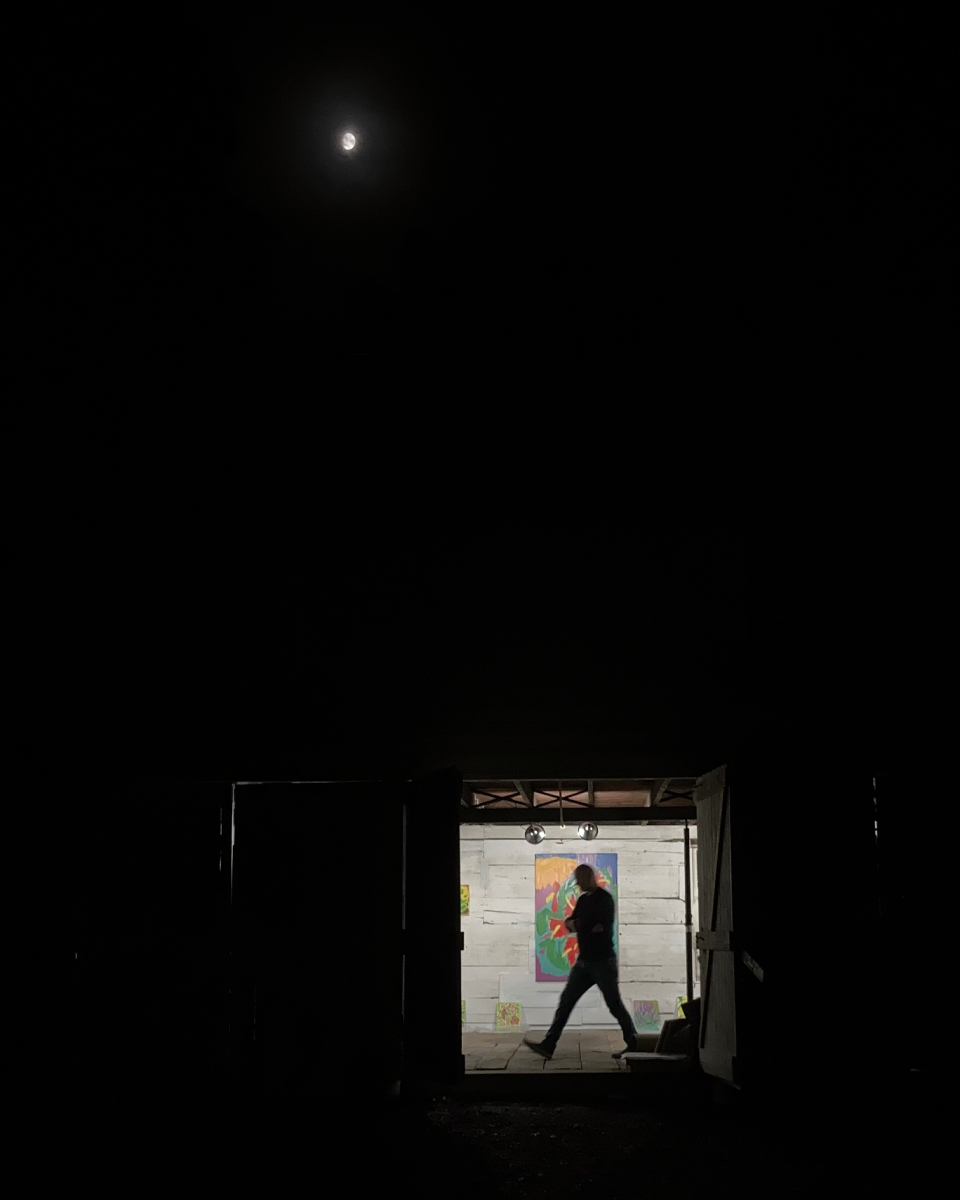
Do you remember any artists as a child that captured your attention?
Paraphrasing here, but I remember reading once from the artist Mike Kelley that influence is like a sea. Meaning that it is beyond the scope of a single or a few things, and for me, to exclude a barrel or a drop would seem futile, as it would make it no less the sea! Still, I’ll give it a try!
Growing up, my house had several Jim Gordeneer (a Canadian abstract painter) paintings that always affected me. Mom is also a painter, and her 70’s/80’s acrylic staining abstracted landscapes and figurative paintings are, to this day, images that I admire. And, being a good Southern Ontarian Canadian, I got exposed early on to the Group of Seven’s spiritualized landscapes, as well as the French Canadian abstractions of Jean-Paul Riopelle, amongst others. But, likely, of all the Canadian painters David Milne has had the biggest impression on me.
Otherwise, my father being from Chicago meant we traveled down to the Midwest pretty often, which involved visits to the Art Institute of Chicago and the Saint Louis Art Museum almost every year, which proved to be quite influential on me. While there, I got exposed to Cézanne, Seurat, Van Gogh, and Gauguin, as well as Beckmann, Kirchner, Munch, and Kandinsky—painting I took for granted then but now admire greatly. I was also strongly affected by the American post-war greats like Rauschenberg, Smith, Serra, Krasner, Warhol, Rothko, Morris, and O’Keeffe.
I’ve also always had Duchamp, Yoko, and Cage on the brain too. I don’t know how, but it’s all in there; I try to let it all wash and wane together, so it becomes a part of me. I let go of my ego and let the ocean of influence carry me away. But, still, today, at this moment right now, I am in a love affair with Munch.
Music has also had a massive influence on me, and I often want to make paintings that infuses the feelings that music gives me. Here is a recent mix of mine for painting.
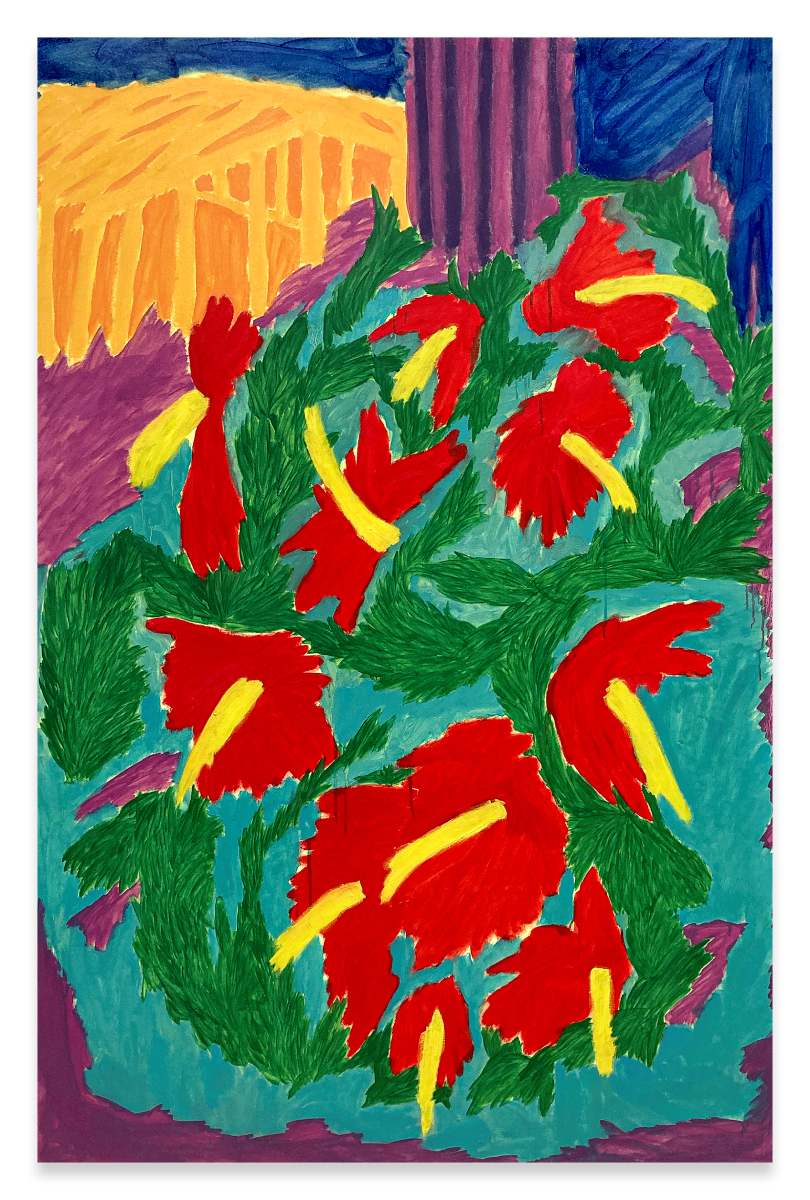
149.4 x 98 cm
oil on canvas
2022
Any artists today you are looking at?
Besides the dead people I mentioned, I am constantly looking at Georgio Morandi. A few living/contemporary artists I admire are Sky Glabush, David Hominal, Alex Katz, Maja Ruznic, Ida Eklebad, Delphine Hennelly, Patricia Iglesias Peco, Claudia Wieser, Matt Macken, and Chris Martin. Otherwise, who I look at changes regularly. Still, I’d say I’m strongly informed by artists who connect with a return to notions of studio practices and the reimagining of traditional methodologies in art making—especially today, painting.
Otherwise, I love music and musician mentality and recently went down an IG rabbit hole with Jack Donoghue and John Holland.
I also read a lot, and am currently reading “What painting is” by James Elkins, as well as daily pages from “To You: Zen Sayings of Kodo Sawaki.”
You are, for the most part, self-taught. Was there a moment when you realized that painting and art making is something you wanted to pursue?
It’s hard to say if anyone is genuinely “self-taught”. I have a bit of a problem with this association. To assume one’s autonomy in the outcomes of their skills and trades is pretty pompous. However, I would say that (in terms of painting) I have yet to have any academic training. I skipped over all that in art college, ignored the evident influence from my mother, and rejected painting for most of my life. That went on until I came to terms with the fact that I was just trying to paint in most of my digital works – I just didn’t want to admit it. Otherwise, I suppose I am something of an “autodidactic” (another term I struggle with). I even taught myself astrology, then got certified as a Hellenistic Astrologer.
Doing things DIY has been a big part of my story, and for painting I didn’t see any other way than to start on my own, find a mentor, and bring many teachers into my life along the way. I’ve been very fortunate to have a wide and disparate group of influential painters/artists and mentors/friends around me, such as Mark Emblem, Sky Glabush, David Hominal, Richie Culver, Derek Liddington, Claudia Wieser, Matt Cangiano, James Gardner, Yuval Frisch, Jenna Crook, Donna Huanca, Stef Heidhues, John Vincent Campbell, Micah Lexier, Ginette Légare, David McIntosh, Christopher Daharsh, Jacob Freeman, Brodie Kamen, Szilvia Bolla, Yasmin Hother Yishay, Monika Dorniak, and Eric Mangen, to name (shoutout) a few (bunch). Their voices are often in my head, and I am blessed to have the space to speak with them about painting and art every so often since they have diverse yet open-minded perspectives.
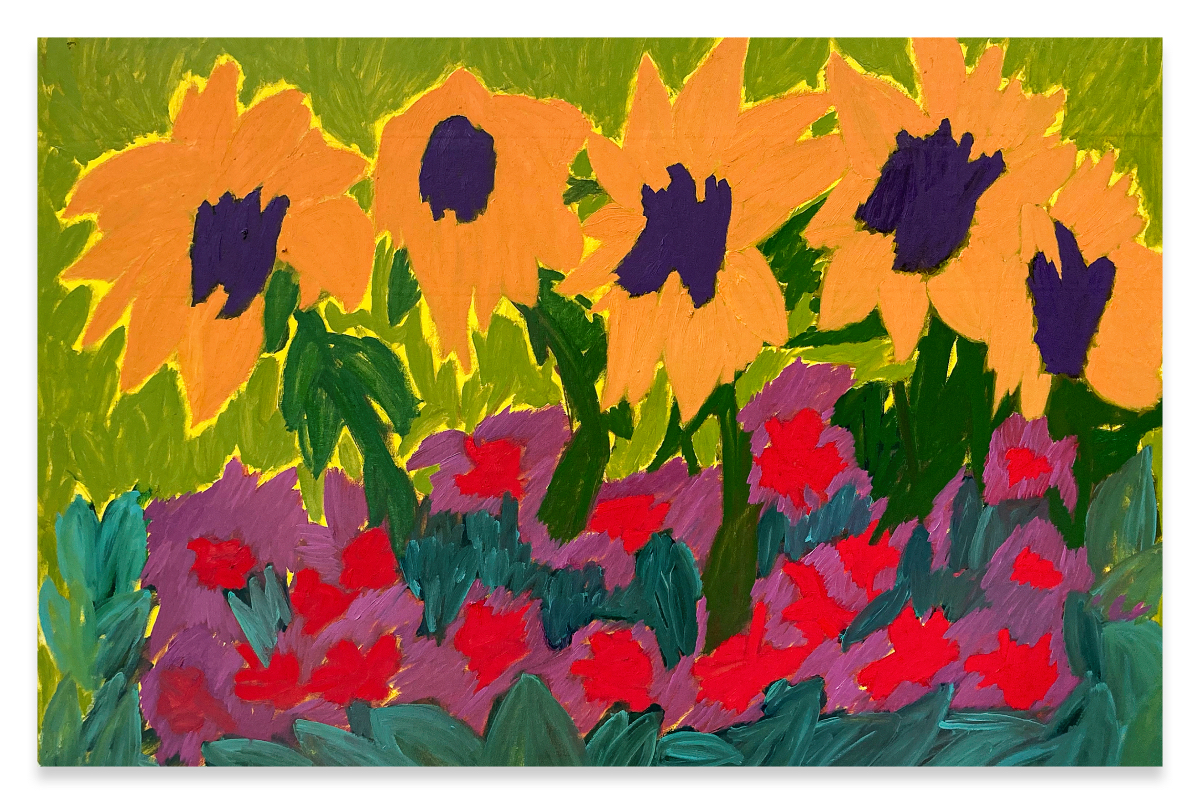
70.8 x 111 cm
oil on canvas
2022
You spoke earlier about your move from a place of critical or conceptual art making towards a practice more grounded in method and technique. What brought about this change?
I suppose it is rooted in the decision to stop taking drugs and the profound effect that has had on my life. Although that took place six years ago, the process of change has been slow and steady. Otherwise, I would say that an unveiling of sorts occurred from disillusionment about the contemporary art world while working at Sprüth Magers. That, coupled with the decision to actively participate in my life (to actively choose life over death), opened a door within me to start exploring the aspects of my creativity (to listen to my Daemon) that I had been rejecting for so long. It was all about practicing the opposite. It is hard to explain, but it felt like life or death for me. And, not to be overly dramatic, but it was literally either change or die.
After the 2018 show at Open Forum I did a residency at the Penthouse Residency through Harlan Levy Projects in Brussels. While there I began automatic charcoal drawings and aluminum scratchings. These works were based on forms and patterns emerging during meditations or dreams that later revealed themselves in reality while in Lithuania with my father. From there, I wanted to go even further toward the unfamiliar for me, which meant developing a more traditional practice. That involved getting up every day, sketching apples or other fruits, self-portraits, as well as doing little figurative portraits from pictures of –mostly– sculptures from antiquity. After that I took my drawings outdoors, brought in color, and went abstract again, but ultimately returned to my interests in an observational practice, which is where I remain today.
What is your normal studio practice like? Any routines or superstitions?
I wake up each day and prepare my body & mind by continuing my Zazen practice with a body prep of a modified Ashtanga series. This daily grounding is essential and fundamental to sustaining my work and life. After that, I typically eat, clean, deal with administrative stuff, then try to put the phone away before starting to work. Then, I decide whether I’m working in the studio or outdoors. If in the studio, I typically put on an audiobook, podcast, or music and then mix some colors, or I get into painting directly. Often I’m working on 3-4 paintings simultaneously.
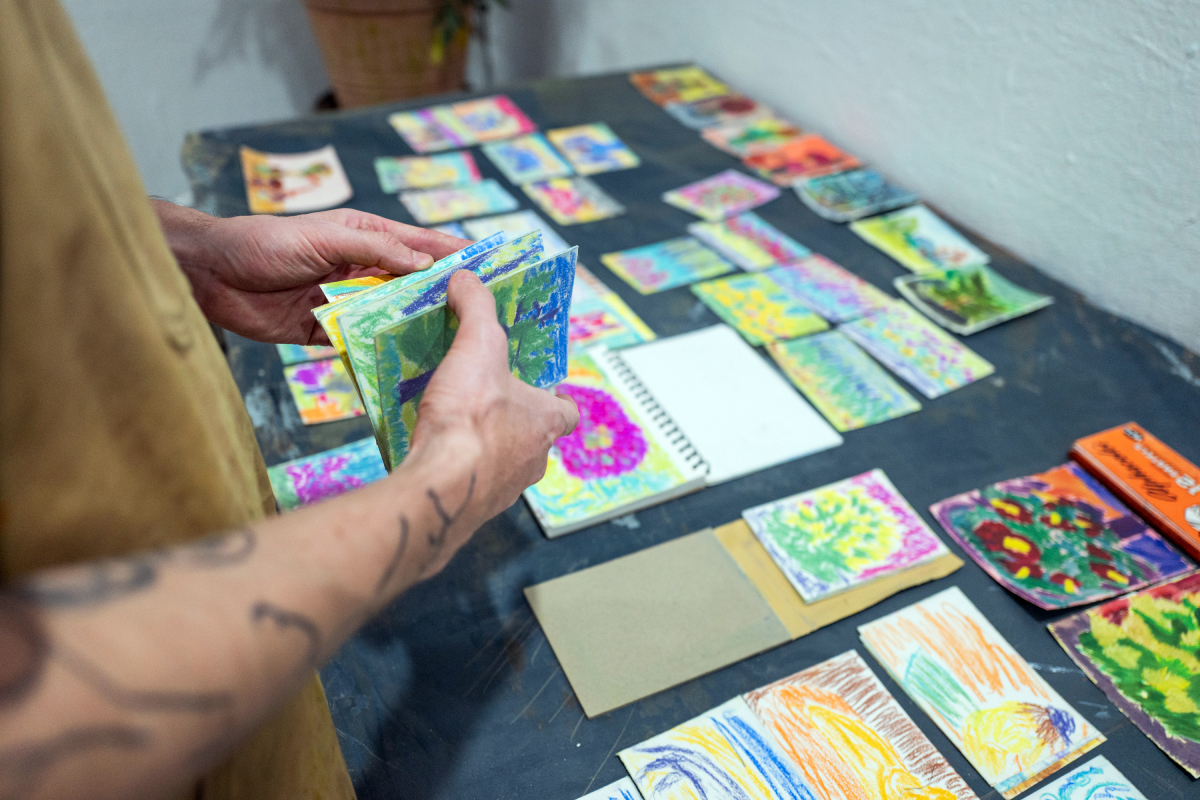
© Tom Jungbluth 2022
Otherwise I’ll take myself for a walk and do 5-10 studies either in pastel, graphite, or watercolor. Walks for me may mean just a local walk in the area I’m inhabiting or a venture to far away places. If I am near the studio, I’ll come back, then compare notes, hang new studies, look look look, and listen. I may follow this by working on a slow study in the studio in either watercolor or crayon.
Typically I work until the evening, so I keep a 10am – 6pm work schedule. Still, it can fluctuate, depending on other commitments and weekly necessities. One must also consider that life is ever happening.
After a work day, I make a meal, hit a meeting, read a book, get 8 hours of sleep, and repeat.
Repetition is the mother of skill.
Tell us more about your working technique. How do you start and then develop a piece?
My current working process starts with the gathering of source materials from field research that takes the form of pastels, watercolors, or drawings on small, easily mobile pieces of varying kinds of paper. Subjects vary but are often that which bring me delight in the moment of my outing or that encourage the desire within me to transcend and exist as I am in the here & now. My compositions are still influenced by photography, especially photography done with the phone, which means that snapshot culture affects my compositions to some degree. Another part of this process is that the moment the subject is captured and taken down, I stop working on it, I put it away, I flip it over, I hide it from sight, and I remove my eyes from what I’m doing. This helps to prevent any significant judgments from occurring, and I try to save that part of the decision-making process for later in the studio.
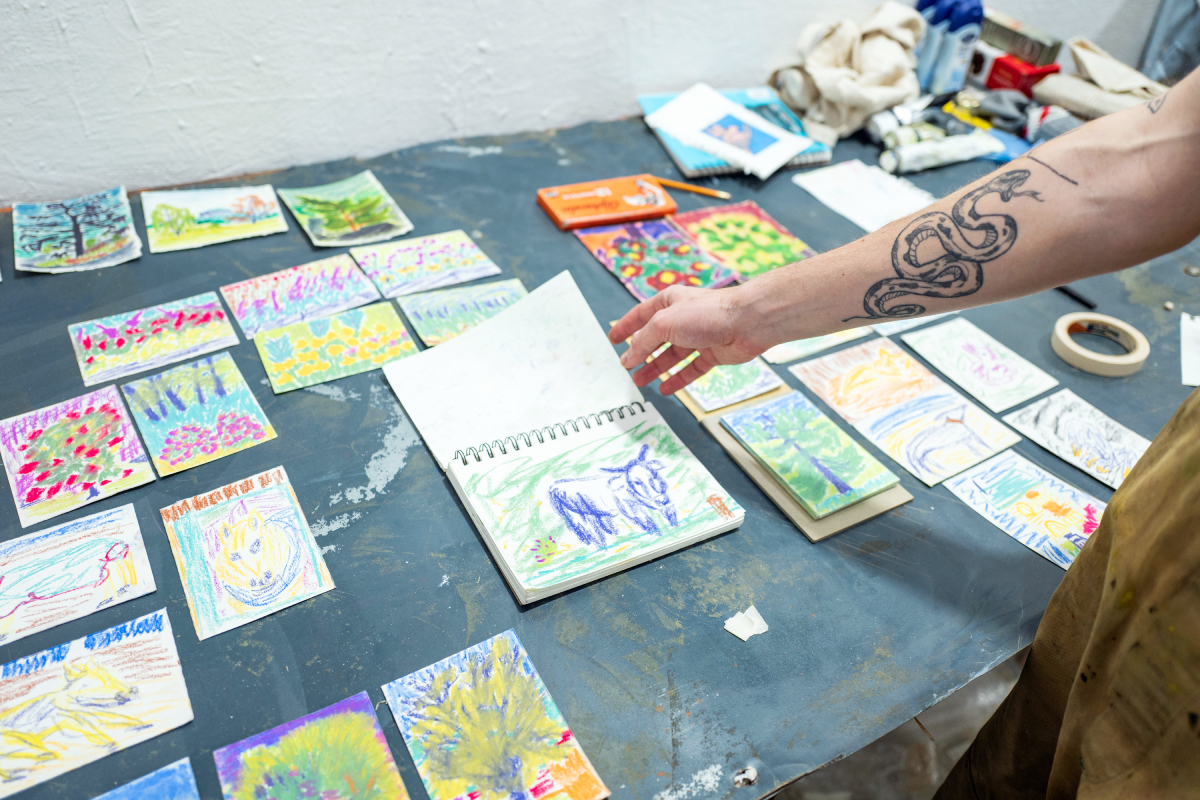
© Tom Jungbluth 2022
After collecting enough source material I continue to lay it out and look & listen at the groupings of subjects and compositions I’ve made. This goes on until there is enough that speaks to me, convincing me to move over to oil. From there it is about color mixing, canvas prepping, etc. Then, using the source material, I engage the surface with wet & dry brushing and move from higher & lower tonal qualities & colors. Next I build and sometimes subtract until the painting takes shape. Then, I move away from the source material, throw it away, and allow the painting to tell me what to do next. From that point forward it becomes more of a conversation, debate, argument, or love affair with the canvas until, at some point, the painting requests or demands me to stop. At this time I stop and test my ability to practice acceptance and compassion with the painting.
From there the real work happens, but I cannot fully explain the final acceptance process. So much of it has to do with the magic that takes place throughout the interaction. The mystery and alchemy of painting. If I were to explain it further, I’d say that I let the painting tell me what to do, and I get myself out of my own way—if possible.
From there I either put the painting away or leave it out to make a position. If it is already stretched I allow it to interact with the others, and if not I either hang it to dry or stretch it. Stretching unstretched paintings has this whole cropping process to it, which is another challenge, but it reminds me of photoshop a bit.
The next phase involves grouping paintings and deciding what does/does not work together, which ones are in or out of a conversation, and listening to which voice is stronger and which voice needs attention. They become like people to me; it is sometimes beyond my comprehension. It feels reminiscent of a sculptural process I’d do with more collage/ready-made based sculptures, which feels totally weird because they look totally different. That could be the kernel of the connection between my old and new work.
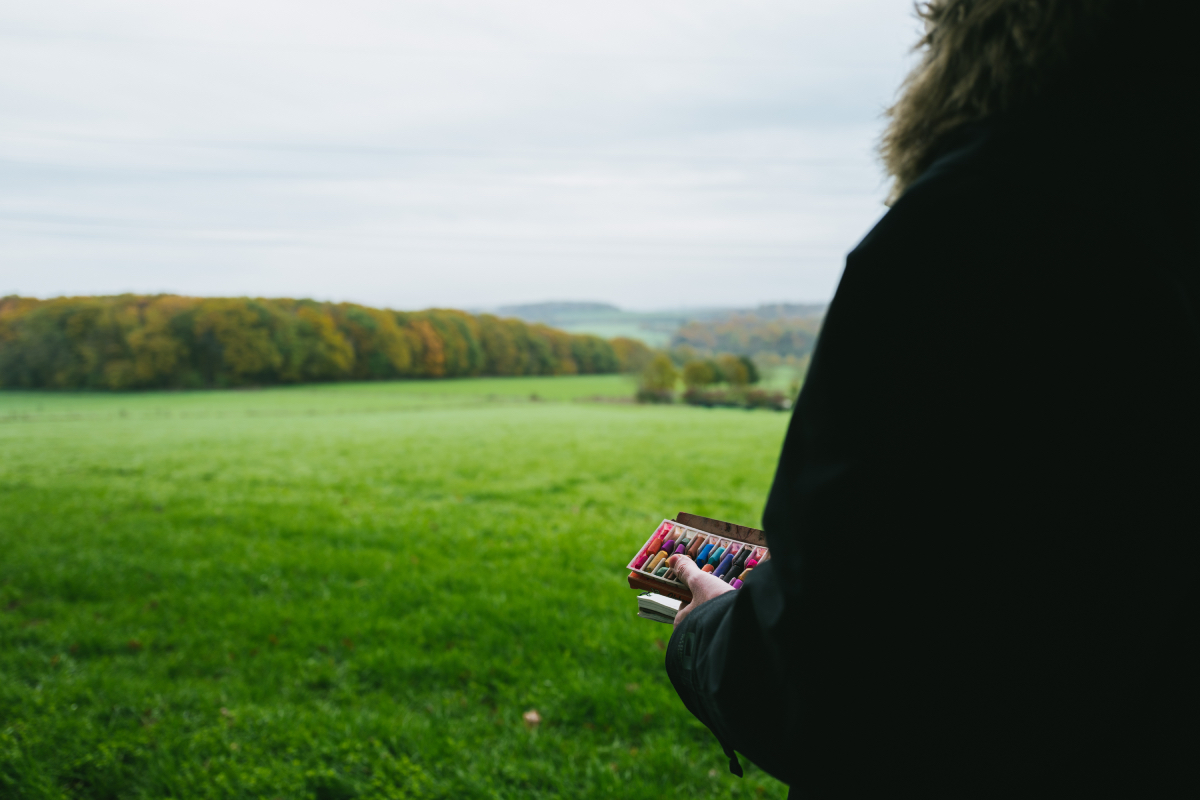
© Tom Jungbluth 2022
Are you more concerned with the process or the end result?
For me they are equally important. One is the hand, the other the glove.
What is the story behind Francis Verein?
Just a fun side “curatorial” project I have been playing with since 2014. It started as a platform to exhibit artists in my studio, but later/now is a place to group together peers and other artists I like in a loose and alternative vision. It is a constant work in progress, and I do not consider myself a curator. I simply enjoy art and the art that others do.
Finally, what is your favorite color?
No favorites at the moment, but I get a sick pleasure from mixing purples and greens in the studio from scratch.
To see more of David Hanes’s work visit his website and Instagram page.
